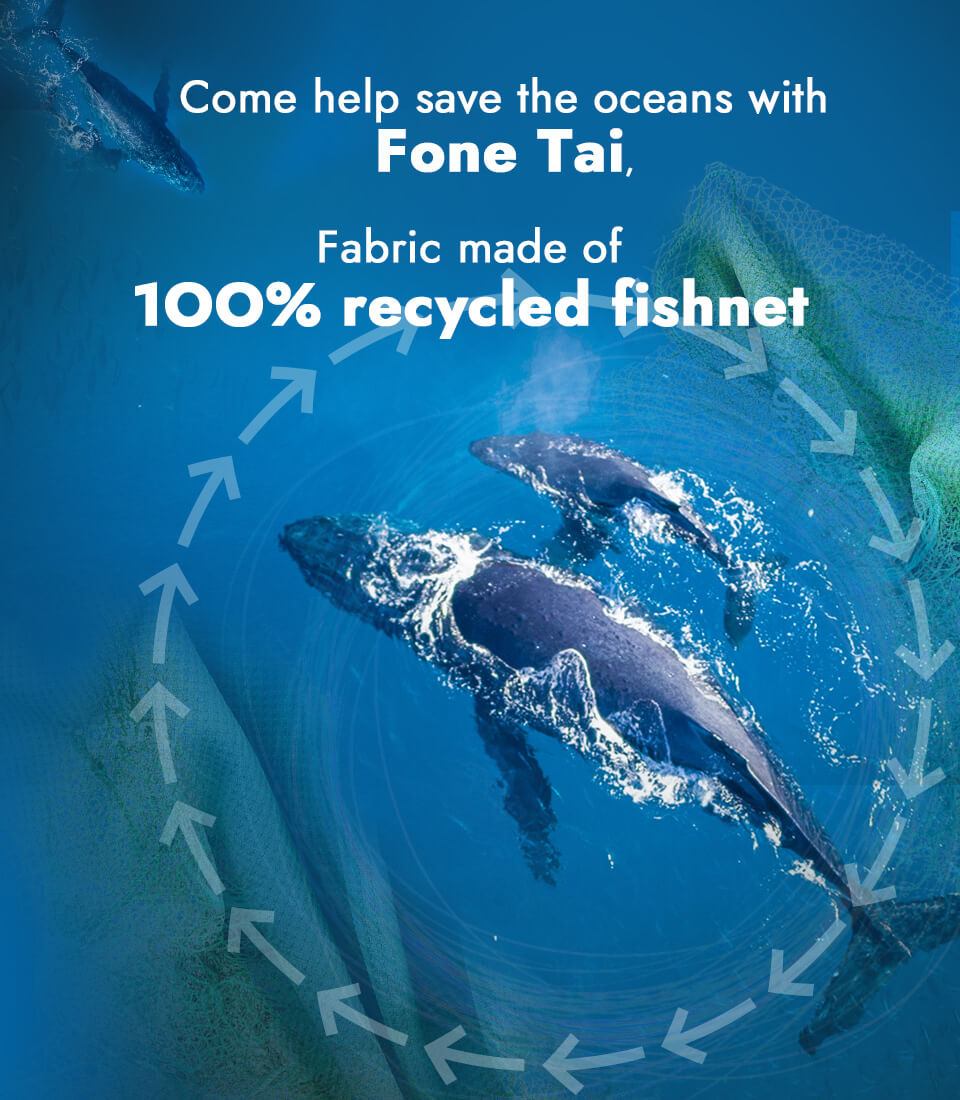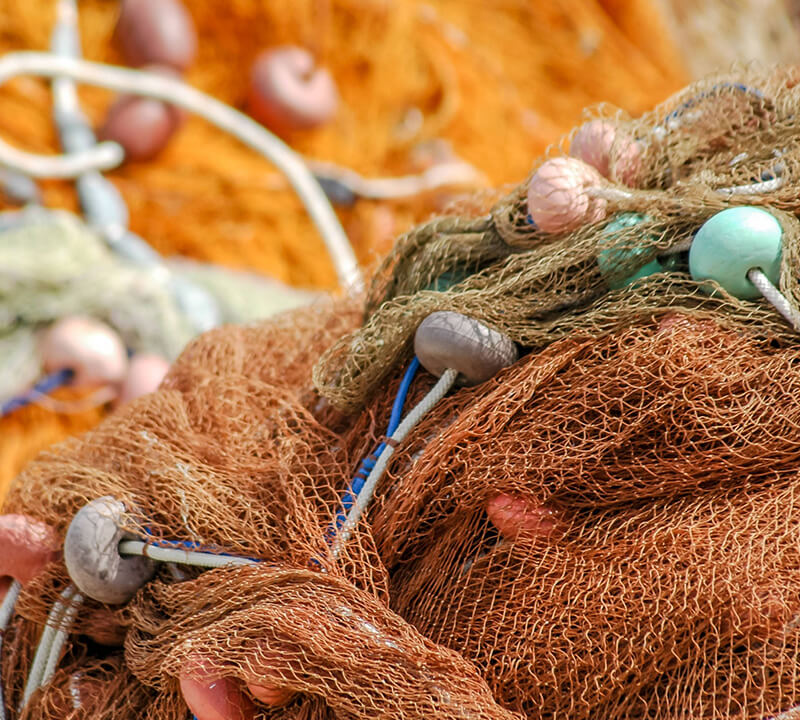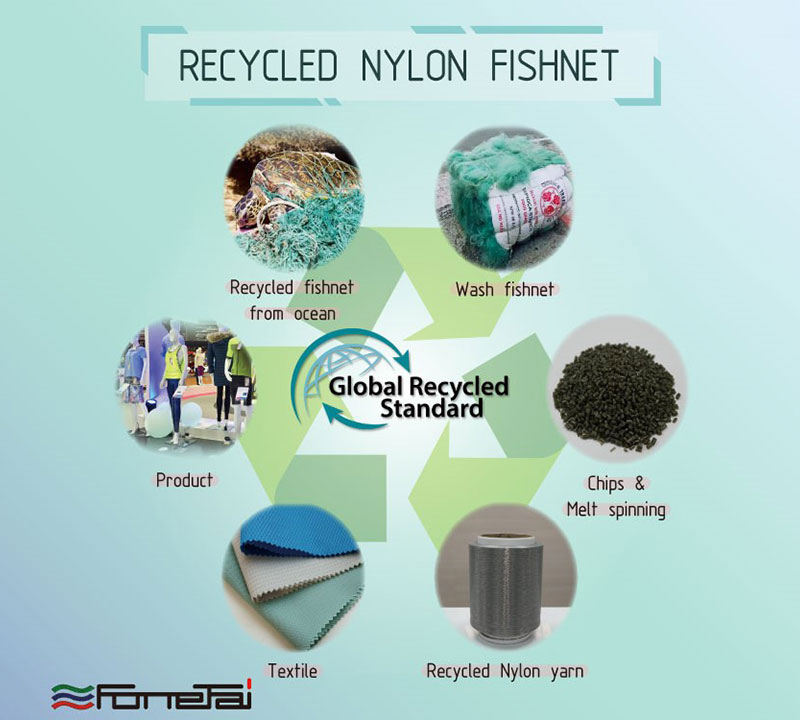Fishing net yarn and Recycled Nylon Fabrics
Recycled nylon fabric is made from recycled nylon, which is a synthetic polymer made from petroleum. Recycling nylon reduces the demand for new resources and helps to reduce waste.
Some common characteristics of recycled nylon fabric include:
Strong and durable: Nylon is a strong and durable synthetic fiber, making it a good choice for products that will see heavy use.
Moisture-wicking: Nylon is known for its ability to wick moisture away from the skin, making it a popular choice for athletic wear.
Quick-drying: Nylon dries quickly, making it a good choice for travel and outdoor activities.
Easy care: Nylon is easy to care for and can be machine washed and dried.
Versatile: Recycled nylon can be used in a variety of applications, including clothing, bags, and home textiles.
Our recycled nylon fishing net fabric obtained GRS certification, to create good breathability and perspiration characteristics, Super elastic comfort, and suitable for long-term running, cycling, and other aerobic exercises.
From Ocean to Fashion: Exploring the World of Recycled Fishing Net Fabric
Recycled fishing net fabric is a revolutionary concept that breathes new life into discarded fishing nets that otherwise harm marine life. It offers a stylish and eco-friendly alternative to traditional fabrics. The rise of recycled fishing net fabric is not just a trend but a testament to the power of sustainable innovation.
Nylon, the raw material of fishing nets, has high economic value. In the past, recycled fishing nets were not easy to sort and clean, so they could only turn into injection parts with low-quality requirements. However, current technology can clean and depolymerize the recycled waste fishing nets into raw materials close to the quality of new products. These raw materials can then be drawn into yarns and put into the circular economy of products, significantly enhancing waste fishing nets' value and utility.
The recycled fishing net is also of great help to environmental improvement as it reduces oil consumption and resource waste while creating resource conversion value. Abandoned fishing nets are not only salvaged by boats and brought back by fishermen themselves but also cooperated with the fishing net manufacturer to make its sales channels also have the function of recycling, significantly reducing the environmental hazards of discarded fishing nets.



